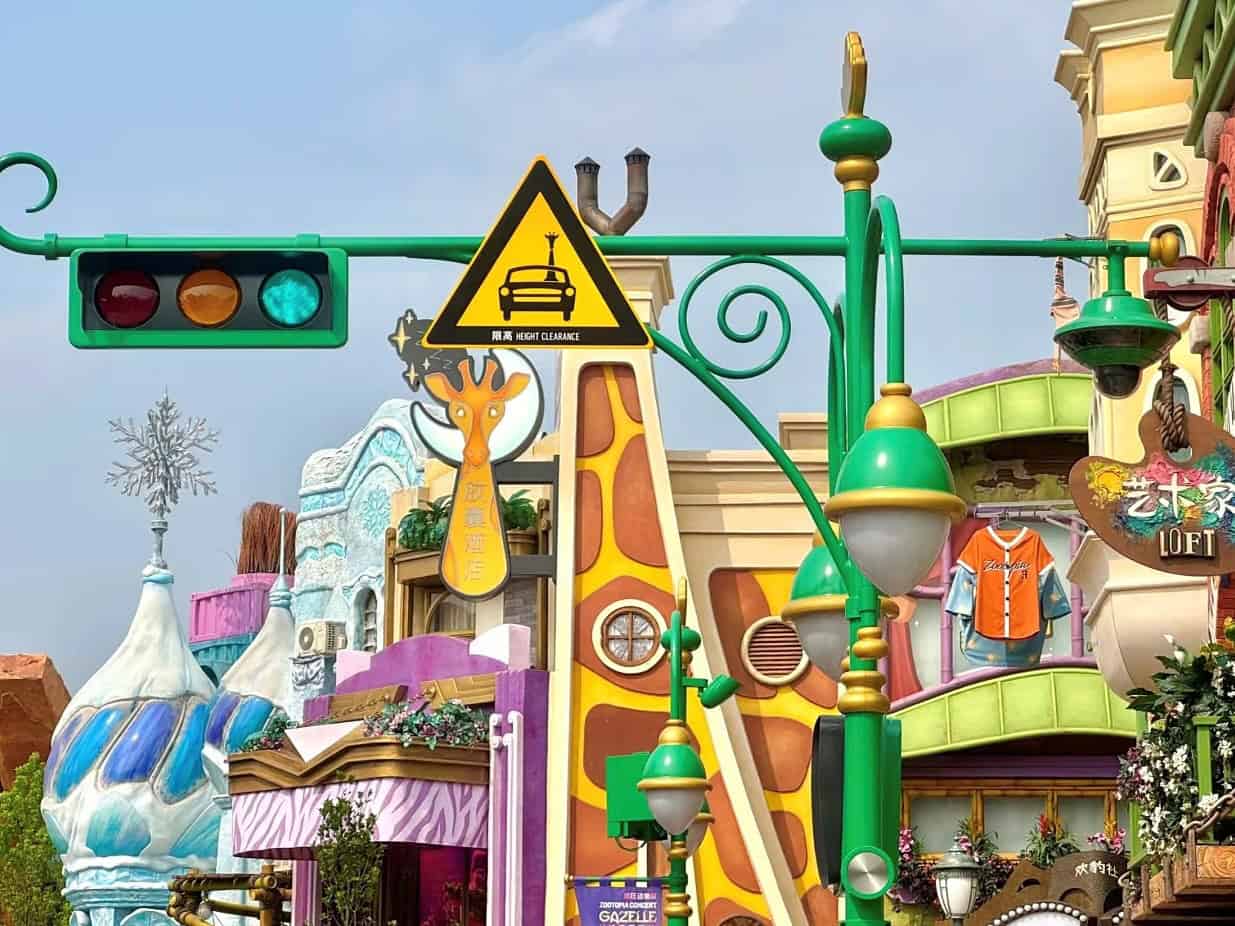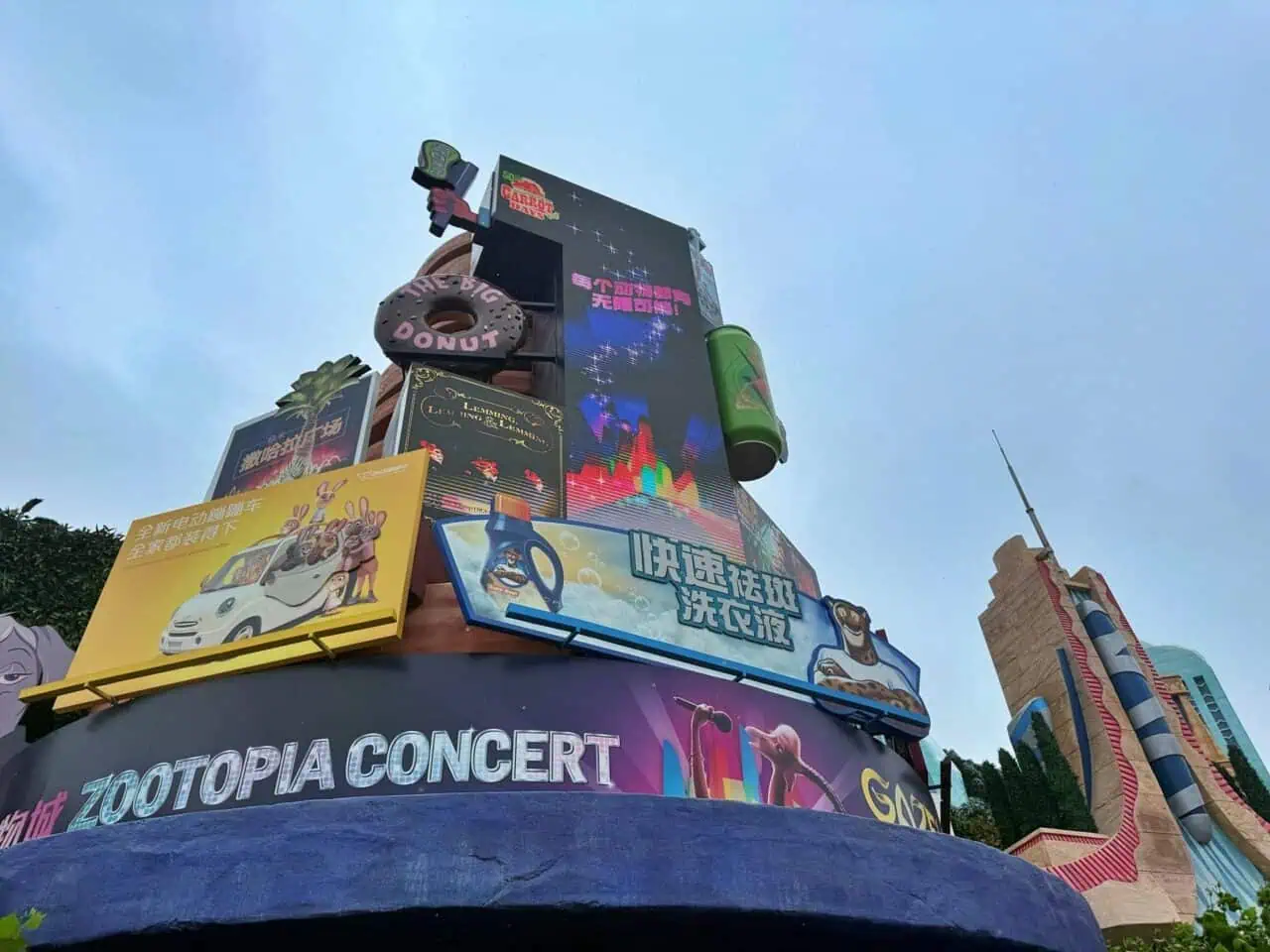If you’re visiting from outside mainland China, there are a few key things to know that’ll make your entire trip—both inside the park and beyond—go a lot smoother. From cultural etiquette to payment methods, language tips, and staying connected, this mini guide covers everything that might feel a bit different from what you’re used to in places like Taiwan, Hong Kong, or other parts of Asia. Whether you’re navigating the park or getting around the city, here’s what you need to know to feel confident and prepared.
🏰 This post contains affiliate links. When you book through our links, you’re helping keep this blog alive—at no extra cost to you. Thank you so much for supporting our work!
Tourist Visa
You’ll most likely need a Tourist Visa (L visa). Here’s what you need to know to make sure your park visit goes smoothly.
Do You Need a Visa?
- Taiwan, Hong Kong, and Macau residents: You’ll need to apply for a Mainland Travel Permit (commonly called 台胞證 or 回鄉證), which is different from a tourist visa.
- Passport holders from most countries: A tourist visa (L) is required for entry into China.
- 240-hour visa-free transit: Eligible travelers can show their valid entry and exit documents and a connecting ticket with a confirmed date and seat to a third country (or region) within 240 hours to the staff of the transportation vehicle at check-in.
Unless your trip qualifies for one of the specific visa-free programs, you’ll need to apply for an L visa in advance.
How to Apply for a Tourist Visa
- Apply through the Chinese Embassy or Visa Center in your country.
- Submit:
- A valid passport (with at least 6 months validity left)
- Completed visa application form
- Recent passport-style photo
- Proof of travel (e.g., round-trip air ticket and hotel booking or park ticket confirmation)
- Some embassies now require in-person appointments with fingerprinting, so don’t leave it to the last minute.

Tourist Visa Processing Time and Cost
- Processing time: Usually 4–7 working days. Expedited options (2–3 days) are available for extra fees.
- Cost varies by nationality. For example, for U.S. passport holders, the fee is about USD $140, while for others it ranges from USD $30–60.
Cultural Norms
Payments (Mobile Pay)
Here, mobile payment is king – nearly everyone uses WeChat Pay or Alipay for everything from buying a soda to souvenirs. All shops and restaurants accept Alipay/WeChat Pay (and UnionPay cards). Many also accept Visa/MasterCard credit cards, but not all – some small snack carts might be mobile-pay only. I strongly suggest setting up at least one of the Chinese mobile payment apps if you can.
Setting up WeChat Pay/Alipay
As a foreigner, you can use Alipay’s TourPass or link an international card to WeChat Pay (recently allowed). I linked my US Visa to WeChat Pay and was able to scan my phone to pay for butterbeer, popcorn, you name it. It was seamless and avoided the need to carry a lot of cash. Here’s what to do:
- Download WeChat app (if you don’t have it already – it’s also a messaging app, like Line/WhatsApp).
- Download Alipay app (it might be listed as Alipay or AliPayHK in app stores).
- You can register with your foreign phone number. Both apps usually have an “International” or “Tourist” version of their wallet you can opt into.
- Add a payment method: Both WeChat Pay and Alipay support adding foreign credit/debit cards (Visa, MasterCard, etc.). UnionPay cards (common in Asia) work too. Recently, they even allow linking some foreign Visa/Mastercards directly for QR payments.
- You might need to verify your identity (passport scan) for Alipay’s “Tour Pass” feature. Alipay even lets you preload a certain amount via your card into a mini balance.
- Once set, you can scan QR codes to pay for things. For example, at shops or restaurants in the park, they’ll have a QR code at the register – open your app, show the QR or scan theirs, enter amount, done. Or they scan your app’s QR. It’s super fast.
Tip: load a few hundred RMB onto your Alipay TourPass or ensure your card link works before you go to the park, so you’re not fiddling with it at the cashier. And have a bit of cash as backup – yes, they do accept cash everywhere in the park too, you won’t be stranded if tech fails. Chinese currency is RMB(CNY), roughly CNY 100 = ~US$14. I usually keep CNY 200 in my wallet for emergencies, but rarely needed it at Universal.
No Tipping
In China, tipping is not expected and can even confuse people. So you do not need to tip anyone – not the taxi driver, not waiters, not hotel bellhops. Wages are set such that tipping isn’t customary. I once tried to tip a hotel porter out of habit and he politely refused. Save your RMB for souvenirs instead.
Language Barrier
The majority of park announcements, show scripts, and signage are in Chinese (Mandarin). Many signs are bilingual (Chinese/English). The English park map or app will fill you in on anything critical. Ride safety spiels are given in both Chinese and English. If you need help, try basic English first; many younger staff know some (especially in shops and with western food names). If not, using a translate app or gesturing works. Chinese guests might be curious about foreigners – if someone strikes up conversation with you in line (“Where are you from?”), it’s often genuine friendliness. Engage if you’re comfortable; it’s a chance for cultural exchange.

Useful Mandarin Phrases: It’s worth learning a few simple phrases, which can win you smiles and help in a pinch:
- “你好” (nǐhǎo) – Hello.
- “谢谢” (xièxie) – Thank you.
- “请问…?” (qǐngwèn) – Excuse me, may I ask…? (a polite opener for questions)
- “厕所在哪里?” (cèsuǒ zài nǎlǐ?) – Where is the toilet?
- “这个多少钱?” (zhège duōshao qián?) – How much is this?
- “不好意思” (bùhǎo yìsi) – Sorry/excuse me (useful if you bump someone or need to get through).
- “我不会说中文” (wǒ bú huì shuō Zhōngwén) – I cannot speak Chinese.
- “可以帮我拍张照吗?” (kěyǐ bāng wǒ pāi zhāng zhào ma?) – Could you take a photo for me? (people are usually happy to).
Even if your pronunciation isn’t perfect, people appreciate the effort.
Crowds and Personal Space
China has a lot of people, and in public places the sense of personal space can be different from, say, Japan or Western countries. You might feel people standing quite close to you in queues or public transport – it’s usually not rudeness, just normal here. I had to adjust to the jostling in busy metro trains; it’s not ill-intended.

In fact, you’ll find that locals are generally friendly and curious about foreign visitors. If you look obviously non-mainland (like speaking English or another language), don’t be surprised if someone strikes up a conversation or wants to practice a bit of English with you. I had a sweet family ask where we were from and welcome us to China while in line for a ride.
Smoking
One cultural difference – smoking is still fairly common among men in China. However, there are increasing restrictions. Within the park, only certain smoking spots are allowed. If you’re sensitive to smoke, outside of the parkyou might still encounter it occasionally. If you are a smoker traveling, be aware of the rules: don’t light up in non-smoking zones (fines can be hefty). Culturally, Chinese smokers often gather in designated spots and usually won’t smoke near kids if you ask them not to.
Charging & Plugs
Power Voltage: China’s power is 220V, 50Hz. If you’re coming from a country with 110V (like Japan, Taiwan, North America), most of your phone chargers, camera chargers, etc. are dual voltage (check the label – usually it says “100-240V”). Those will work fine, you just need a plug adapter. If you have something that’s only 110V (like some hairdryers or older electronics), you’ll need a voltage converter or better yet, don’t bring those and use the hotel’s hairdryer.
Plug Type: The outlets in mainland China typically accept three-prong Type I (the Australian-style angled flat prongs) or the two-prong Type A (the flat parallel blades like US/Japan). Actually, Chinese outlets are often a combination socket that can take both
Power banks: A small power bank can save you – between taking photos, navigating, and maybe streaming a live parade video, you can burn through battery. My trick: use the phone in moderation (take breaks from screen time to just enjoy the park!) and close the app when not needed to save battery.
Internet & Data
Staying connected in China requires a bit of planning, but it’s important – especially for using maps, translation, and the Universal resort app during your visit. Here’s how to keep your internet and data working smoothly.
Mobile Data – Get a Local SIM or eSIM
I highly recommend getting an eSIM for your trip. Free Wi-Fi isn’t widely available in the park itself (there might be some Wi-Fi hotspots, but I found them spotty and they often require a Chinese phone number to receive an SMS code).
- Recommended: eSIM for China, Hong Kong, Macau (QR code activation via email) 5 days for USD 8.15.
- Recommended: 4G Global eSIM by Eskimo 1GB for USD 7.
If eSIM isn’t an option, you can buy a local China Unicom/China Mobile SIM card. You might get one at the airport or a phone shop in the city. Keep in mind there’s a real-name registration for SIMs (bring your passport) and some SIMs bought outside mainland might have limited access. But generally, having a Chinese SIM means you’ll have 4G/5G data in the park and everywhere.
Great Firewall Considerations
Note that certain western websites and apps (Google, Facebook/Instagram, YouTube, etc.) are blocked on regular Chinese internet. If you want to use these, you’ll need a VPN app set up or use international eSIM before you arrive in China. However, Chinese alternatives or travel-specific tools can cover most needs: use Bing or Baidu for search, Baidu Maps or Apple Maps for navigation in China (Google Maps won’t load without VPN), and rely on the official app for in-park stuff.
I generally disconnect for the day and just use the local tools – it’s actually refreshing. If you absolutely need to post an Instagram story from the park, get a VPN (and be discreet with it). The Universal app and park-related sites are not blocked, so those work fine on Chinese data.
In-Park Behavior
Line Etiquette
Chinese visitors generally do queue up patiently for rides, and I found behavior in the park to be orderly. You might hear old stories of line-cutting in China – I didn’t witness much of that. People understand everyone’s paid a lot to be there, so they tend to follow the rules. That said, it can get a bit cozy in crowded queues (personal space is smaller in China), so don’t be alarmed if the folks behind you stand pretty close or if there’s some gentle jostling when entering a theater show.

It’s normal and not meant to be rude. Just stand your ground politely. If someone does attempt to cut, a firm but friendly “Bù hǎoyìsi, qǐng páiduì” (“excuse me, please queue up”) can help – often it might be a misunderstanding. But really, I found staff and social pressure keep line cutters at bay. Chinese families sometimes have one member hold a spot while others take a bathroom break – that’s usually tolerated if it’s just one or two rejoining.
12 Tips for Shanghai Disneyland
12 Tips for Universal Studios Beijing
Crowd Behavior
When the rope drops in the morning, you’ll see many guests make a mad dash to the big attractions. Running at rope drop is almost a sport – I admit I’ve jogged alongside them!
It’s a common behavior: people plan which ride to hit first and hurry to be first in line. If you’re not into that, you can stroll behind, but be aware others might lightly jog. Also, for popular shows, Chinese guests queue up early to get good seats; you might see a line forming 30 minutes before showtime. Joining that line is how you show you’re serious about a good view – totally normal.
Photography Etiquette & Dressing Up
Photo spots are serious business: Chinese guests love taking photos at designated “Instagrammable” spots. There might even be queues for popular photo ops. People are generally courteous taking turns snapping pictures for each other. If photography is important to you, try to visit these spots early in the morning or during meal times.

One thing I adore is how much locals get into dressing up. You’ll see couples or friends in matching outfits, it’s totally a norm to cosplay lightly or at least wear fandom merch.
Saving Spots
At parades or nighttime shows, it’s common for one family member to scout a spot and lay out a mat or stand waiting while others are on rides or grabbing food. This is accepted practice. If you see an unattended mat or some bags “holding” a spot, it’s intentional – best not to move them. If you’re doing the same, it’s usually fine. I spread a small travel blanket to claim a curb spot for the evening light show about 45 minutes early while my friend went shopping. No one bothered it, and people generally respect that system.
Family Dynamics
It’s common to see multi-generational families – grandparents, parents, kids all together. Chinese doting grandparents might accompany small children on gentler rides or just wait on benches while the young ones do thrill rides. It’s sweet. If you have kids, know that Chinese folks might be very friendly or curious – we often saw some ayi (aunties) commented “Hǎo kě’ài!” (“so cute!”) to kids and even offered them candies. That’s just warm hospitality. Also, there’s an unspoken understanding to help each other out – like offering a hand to a stranger’s kid getting off a ride vehicle, or sharing a bench. Community feel is there.
Important Apps to Download Before Your Trip
- Official Park App (Shanghai Disneyland / Universtal Studios Beijing): For park maps, wait times, show schedules, premier access/express pass, and mobile food ordering.
- WeChat: The essential all-in-one app for messaging, payments, and more in China.
- Alipay: Another major payment platform in China.
- DiDi: China’s equivalent to Uber for arranging rides.
- Baidu Maps or Apple Maps: For navigation in China (Google Maps has limited functionality.
Final Thought
Traveling to China for the first time might feel overwhelming, but once you get past the learning curve—apps, payments, plugs, language quirks—it becomes incredibly rewarding. The systems are efficient, locals are friendly (especially toward families and kids), and modern cities like Shanghai are surprisingly easy to navigate with the right prep.
With this guide in hand, you’ll feel more confident landing in China, making mobile payments at Disney or Universal Studios, asking for help in Mandarin (or pointing at your phone), and enjoying every magical moment at the park. Just prep ahead, stay flexible, and you’ll be surprised how smooth your trip can be.
Be sure to checkout our comprehensive Shanghai Disney Planning Guide and Universal Studios Beijing Planning Guide.








